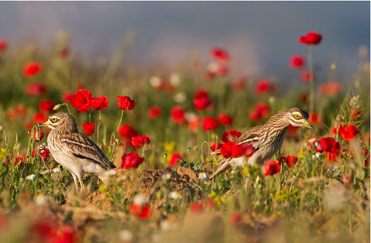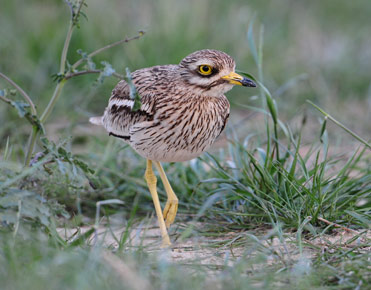Extreme weather events I
Q:
“What’s the weather like in May?”
We used to be able to answer that question with some degree of confidence. But nowadays we have to be very careful how we phrase our reply, using “Well, it should be….” or “Traditionally it has been…”, or similar reserved formulas. This year’s weather has been so riddled with extremes that it would be reckless to do otherwise.
For many of us living and birding in Spain it started around mid-February, with rain. “Hooray! Rain!” might have been the initial reaction, especially when the prospects of a continued or repeated drought are the foremost of people’s climatic concerns. But when that rain continues almost without respite for 2 whole months, and when the reservoirs and rivers are close to bursting their banks, even the most aqueous-minded souls among us are stirred to say “OK, that’s enough. You can stop raining now, please”.
Apart from the 60 days there’s also the question of timing. Birders can normally cope with mid-February being wet, but mid-April? When the spring migration should be building to its peak? It’s not just the comfort factor, but more the birds themselves that are the major concern. Migratory birds fly a long way in the spring to reach northern latitudes in order to take advantage of the temporary abundance of food and to breed before making the return migration. In order to establish territories, attract mates, and to recover from the long, demanding journey they need to be fighting fit. And for that they need to feed, and feed well.
Did you hear about Stone Curlews turning up in the UK in poor physical condition? Haggard, thin, exhausted? Stone Curlews are quite numerous in the right habitat in the “drier”, warmer parts of Spain, where they nest on the ground in dry, open, flat areas with sparse vegetation. My experience this spring, and I believe it was similar to other local bird guides, was that Stone Curlews were largely noticeable by their absence. It took a lot more searching than normal to find a Stone Curlew or two.
On reflection that shouldn’t be too hard to understand, for what “dry” areas were left to them? Normally stony or sandy fields and tracts were transformed into mudslides, puddles, mudclots and so on, and God only knows what they could find to eat. So if they couldn’t find the right habitat and conditions in Spain, by the time the Stone Curlews passing through to get to France or the UK had left Spain what sustenance had they found?

Sunshine, poppies and a decent mate. What more could a Stone Curlew ask for?
Photo by Mark Curley. See more of Mark’s photos taken on the same bird photo trip here.
Around mid-April the sun came out in Spain and warmed us all to a smile and a sigh of relief “At last! Spring has arrived!”. The Stone Curlews responded and appeared in their usual breeding areas and started to, well, breed. When you see a Stone Curlew sitting in a particular spot for several consecutive days it’s usually a good indication that that bird is incubating or will be doing so quite shortly. And you tend to think that things won’t be so bad after all.

An adult Stone Curlew looking quite optimistic about the upcoming season’s breeding prospects
Photo by Vincent Grau
But then it starts raining again, and it rains for 6 days without respite. And in those 6 days if the adult birds manage to sit tight on the nest, if they are not disturbed by predators, competitors or humans in any guise, and they do not leave the eggs long enough for them to get cold and die, it will be a small miracle.
And that’s only the beginning….
Leave a Reply